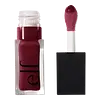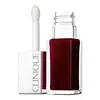What's inside
What's inside
 Key Ingredients
Key Ingredients

 Benefits
Benefits

 Concerns
Concerns

 Ingredients Side-by-side
Ingredients Side-by-side

Hydrogenated Polyisobutene
EmollientTridecyl Trimellitate
EmollientPolyisobutene
Phytosteryl/Octyldodecyl Lauroyl Glutamate
Skin ConditioningHydrogenated Styrene/Isoprene Copolymer
Dextrin Palmitate
EmulsifyingSqualane
EmollientPrunus Armeniaca Kernel Oil
MaskingPersea Gratissima Oil
Skin ConditioningSimmondsia Chinensis Seed Oil
EmollientPunica Granatum Seed Oil
EmollientTocopheryl Acetate
AntioxidantParfum
MaskingDiethylhexyl Syringylidenemalonate
Skin ProtectingPhenoxyethanol
PreservativeCaprylyl Glycol
EmollientCaprylic/Capric Triglyceride
MaskingPentaerythrityl Tetra-Di-T-Butyl Hydroxyhydrocinnamate
AntioxidantTocopherol
AntioxidantSimethicone
EmollientIron Oxides
CI 15850
Cosmetic ColorantHydrogenated Polyisobutene, Tridecyl Trimellitate, Polyisobutene, Phytosteryl/Octyldodecyl Lauroyl Glutamate, Hydrogenated Styrene/Isoprene Copolymer, Dextrin Palmitate, Squalane, Prunus Armeniaca Kernel Oil, Persea Gratissima Oil, Simmondsia Chinensis Seed Oil, Punica Granatum Seed Oil, Tocopheryl Acetate, Parfum, Diethylhexyl Syringylidenemalonate, Phenoxyethanol, Caprylyl Glycol, Caprylic/Capric Triglyceride, Pentaerythrityl Tetra-Di-T-Butyl Hydroxyhydrocinnamate, Tocopherol, Simethicone, Iron Oxides, CI 15850
Hydrogenated Polyisobutene
EmollientTriisostearyl Citrate
EmollientPentaerythrityl Tetraethylhexanoate
EmollientPolyglyceryl-2 Triisostearate
EmulsifyingHydrogenated Polydecene
EmollientRicinus Communis Seed Oil
MaskingDipentaerythrityl Tri-Polyhydroxystearate
EmollientCarthamus Tinctorius Seed Oil
MaskingOlea Europaea Fruit Oil
MaskingSimmondsia Chinensis Seed Oil
EmollientSilica
AbrasiveTocopheryl Acetate
AntioxidantCurcuma Longa Root Extract
MaskingGlycine Soja Seed Extract
Skin ConditioningCeramide Ns
Skin ConditioningSqualane
EmollientLactobacillus Ferment
Skin ConditioningHelianthus Annuus Seed Oil
EmollientLauryl PCA
HumectantCaprylyl Glycol
EmollientDimethicone
EmollientPolysilicone-11
Water
Skin ConditioningTetrahexyldecyl Ascorbate
AntioxidantPentaerythrityl Tetra-Di-T-Butyl Hydroxyhydrocinnamate
AntioxidantMica
Cosmetic ColorantCI 77491
Cosmetic ColorantCI 77492
Cosmetic ColorantCI 77499
Cosmetic ColorantCI 45410
Cosmetic ColorantCI 17200
Cosmetic ColorantCI 77891
Cosmetic ColorantCI 77742
Cosmetic ColorantCI 19140
Cosmetic ColorantCI 45380
Cosmetic ColorantCI 73360
Cosmetic ColorantCI 75470
Cosmetic ColorantCI 77163
Cosmetic ColorantCI 15850
Cosmetic ColorantCI 45370
Cosmetic ColorantCI 42090
Cosmetic ColorantCI 15985
Cosmetic ColorantHydrogenated Polyisobutene, Triisostearyl Citrate, Pentaerythrityl Tetraethylhexanoate, Polyglyceryl-2 Triisostearate, Hydrogenated Polydecene, Ricinus Communis Seed Oil, Dipentaerythrityl Tri-Polyhydroxystearate, Carthamus Tinctorius Seed Oil, Olea Europaea Fruit Oil, Simmondsia Chinensis Seed Oil, Silica, Tocopheryl Acetate, Curcuma Longa Root Extract, Glycine Soja Seed Extract, Ceramide Ns, Squalane, Lactobacillus Ferment, Helianthus Annuus Seed Oil, Lauryl PCA, Caprylyl Glycol, Dimethicone, Polysilicone-11, Water, Tetrahexyldecyl Ascorbate, Pentaerythrityl Tetra-Di-T-Butyl Hydroxyhydrocinnamate, Mica, CI 77491, CI 77492, CI 77499, CI 45410, CI 17200, CI 77891, CI 77742, CI 19140, CI 45380, CI 73360, CI 75470, CI 77163, CI 15850, CI 45370, CI 42090, CI 15985
 Reviews
Reviews

Ingredients Explained
These ingredients are found in both products.
Ingredients higher up in an ingredient list are typically present in a larger amount.
Caprylyl Glycol is a humectant and emollient, meaning it attracts and preserves moisture.
It is a common ingredient in many products, especially those designed to hydrate skin. The primary benefits are retaining moisture, skin softening, and promoting a healthy skin barrier.
Though Caprylyl Glycol is an alcohol derived from fatty acids, it is not the kind that can dry out skin.
This ingredient is also used as a preservative to extend the life of products. It has slight antimicrobial properties.
Learn more about Caprylyl GlycolCi 15850 is the pigment color red. It is an azo dye and created synthetically.
Azo dyes need to be thoroughly purified before use. This allows them to be more stable and longer-lasting.
This ingredient is common in foundations, lipsticks, and blushes. This color is described as brown/orangey red.
It has many secondary names such as Red 6 and Red 7. According to a manufacturer, Red 6 usually contains aluminum.
Learn more about CI 15850Hydrogenated Polyisobutene is a synthetic polymer. Polymers are compounds with high molecular weight. Hydrogenated Polyisobutene is an emollient and texture enhancer.
In one study, Hydrogenated Polyisobutene showed better skin hydration levels than Caprylic/Capric Triglyceride. As an emollient, it helps keep your skin soft and hydrated by trapping moisture in.
Hydrogenated Polyisobutene is often used as a mineral oil replacement.
Learn more about Hydrogenated PolyisobutenePentaerythrityl Tetra-Di-T-Butyl Hydroxyhydrocinnamate (long name, huh?) is a synthetic antioxidant.
It is used to help stabilize other antioxidants or prevent the color from changing in a product.
As an antioxidant, it helps fight free-radical molecules. Free-radical molecules are capable of damaging our cells and other genetic material. Thus, antioxidants may reduce the signs of aging.
This ingredient is oil-soluble.
Learn more about Pentaerythrityl Tetra-Di-T-Butyl HydroxyhydrocinnamateThis oil comes from the seeds of the desert shrub called Jojoba. It is more commonly known as jojoba oil, a non-comedogenic oil.
Jojoba oil does not contain fragrance and has many fatty-acids, making it a great soothing ingredient.
It also contains Vitamin E, a great moisturizing ingredient. Vitamin E is also an antioxidant and protects your skin against oxidative damage.
This ingredient humectant properties, meaning it helps draw moisture from the air. This helps keep your skin hydrated.
While jojoba has antibacterial properties, it is only able to kill some strains of bacteria.
Studies also show it helps in wound healing. In fact, Indigenous cultures have used jojoba as a moisturizer and to help treat burns for centuries.
Fun fact: Jojoba oil similar to natural human skin sebum, so it has a great effect on dry skin. It is also promising with helping to regulate sebum production.
Due to its fatty acid content, Jojoba oil may not be fungal acne safe. We recommend speaking with a professional if you have any concerns.
Learn more about Simmondsia Chinensis Seed OilSqualane is an emollient that helps the skin hold onto moisture. It's an oily liquid that occurs naturally in certain types of fish and plant oils.
Because squalane boosts hydration in the skin, it also comes with plenty of benefits: it is an antioxidant and can help fight free radicals and skin damage. Squalane is also found to have a detoxifying effect when applied.
Squalane comes from squalene, which occurs naturally within the sebum of our skin. It is one of the oils our skin produces to keep itself hydrated. Squalane is the hydrogenated version of squalene and has a longer shelf life.
Research shows that squalane is non-irritating (even at 100% concentration).
In general, it's a fantastic ingredient. It does a great job at hydrating the skin, and it's suitable for those with sensitive skin.
The source of squalane may impact malassezia / fungal acne. This is because olive oil derived squalane can contain impurities such as fatty acids and plant waxes. Sugarcane derived squalane is recommended for anyone with malassezia concerns.
Is squalane vegan?
This depends on the source. Squalane can be derived from both plants and animals. Most squalane used in skincare comes from plants.
Please note: the source of squalane is only known if disclosed by the brand. We recommend reaching out to the brand if you have any questions about their squalane.
Read more about squalene with an "e".
Is squalane an oil?
Squalane is often called an oil, but it’s technically not; it’s a hydrocarbon, meaning it’s only made of carbon and hydrogen, unlike true oils which are triglycerides made of fatty acids and glycerol.
The term “oil-free” isn’t regulated, so companies can define it however they want. Some exclude all oils, while others just avoid mineral oil or comedogenic oils.
While some people avoid oils thinking they cause breakouts, the right kind of oil (or oil-like ingredient like squalane) can actually help balance and hydrate your skin. It’s worth testing out simple oils or squalane to see what works best for your skin.
Learn more about SqualaneTocopheryl Acetate is AKA Vitamin E. It is an antioxidant and protects your skin from free radicals. Free radicals damage the skin by breaking down collagen.
One study found using Tocopheryl Acetate with Vitamin C decreased the number of sunburned cells.
Tocopheryl Acetate is commonly found in both skincare and dietary supplements.
Learn more about Tocopheryl Acetate